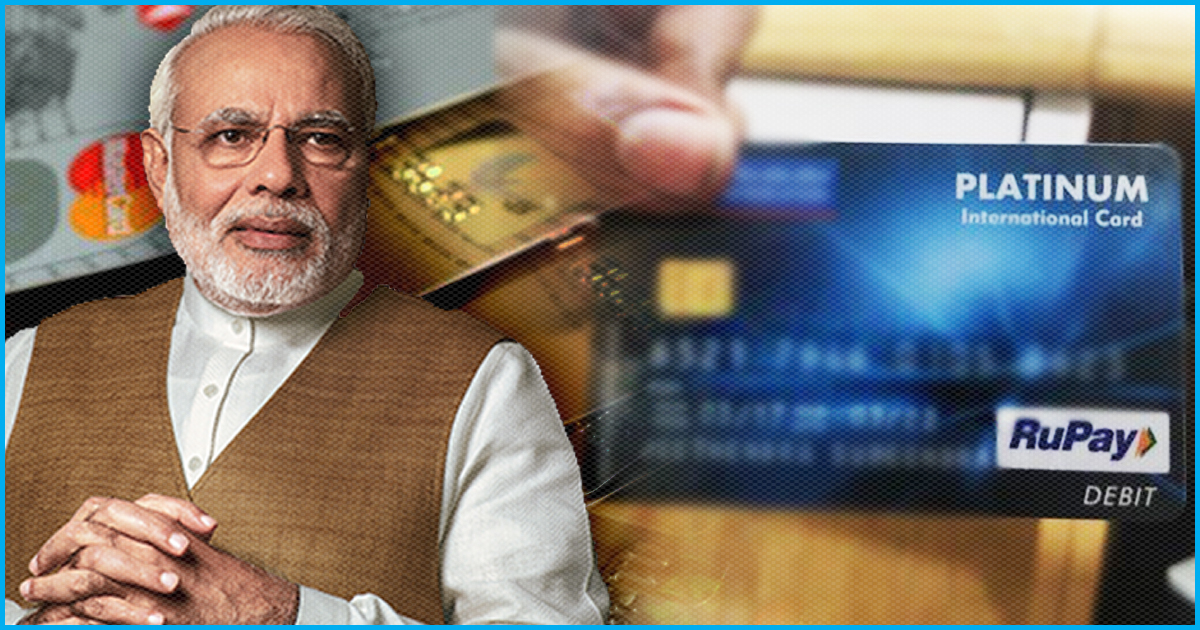On Thursday, November 8, Finance Minister Arun Jaitley said that because of RuPay’s growing popularity and usage, global payment gateways have been losing market share in India. He attributed these changes to note ban which he said has increased digital transactions in the country.
Almost a week later on November 14, Prime Minister Modi, while speaking at Singapore Fintech Festival said, “Financial inclusion has become a reality for 1.3 billion Indians.” He said that digital transactions have been facilitated by homegrown BHIM and Rupay platforms for monetary transactions.
RuPay has been growing
Riding on the government’s back, RuPay has slowly been expanding in the Indian market, giving a stiff competition to international giants like Mastercard and Visa. India’s homegrown card payment network, RuPay constituted just 0.6% in market share in 2013, now it controls half of the market share in the country, reported Financial Express.
According to Reserve Bank Of India data, the country’s debit-card volume is 925 million out of which RuPay claims to power 500 million cards which have been issued by over 1100 banks. The card was initially launched in 2012, however, in 2014, it really picked up after the government instructed the issuance of the card to every account holder who opened the account under the Prime Minister Jan Dhan Yojana, reported The Economic Times.
Not only in the number of cards issued, but at point-of-sales (POS) too, the card’s usage has jumped to 459 million transactions in the financial year 2017-18 as opposed to 195 million the previous year. The number of RuPay cards in circulation also grew exponentially in the financial year 2017-18. In terms of payments, transactions worth Rs 16,000 crores took place on Rupay as opposed to Rs 5,934 the year before. With constant government efforts and incentives, debit cards, which were considered a luxury by many have reached the hinterlands of India.
BHIM UPI on the rise as well
Along with Rupay debit and credit cards, what facilitated this “financial inclusivity” was UPI-based payment interface called Bharat Interface for Money (BHIM). With BHIM, an individual can transfer funds in real-time by using a single identity like a mobile number. UPI has been developed by an RBI-regulated entity, National Payments Corporation of India (NPCI) and has been built over IMPS (Immediate Payment Service).
The Hindu BusinessLine reported that NPCI has said that between April and October of 2018 over 600 crore transactions took place through its debit, credit and prepaid cards along with BHIM UPI which accounted for about 300 crore transactions. In terms of value, out of over Rs 18 lakh crore, BHIM UPI accounted for over Rs 1.7 lakh crore.
With the growing popularity of indigenous payments mode in India, Mastercard reportedly complained to the Office of the United States Trade Representative alleging that the Indian government associates Rupay with nationalism and said that the Indian government has adopted certain protectionist policies which are detrimental to other companies.
Also Read: Govt’s Mobile Payment App BHIM Updated; Know About It











